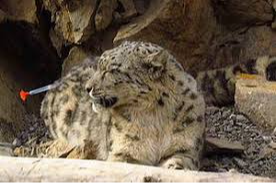
October 23 marked the International Snow Leopard Day, an annual event dedicated to raising awareness about the importance of snow leopard conservation. Occurred in 2014 for the first time, the day has become a global call to action to protect these elusive and endangered species. It highlights the urgent need to halt poaching and to foster partnerships with local communities in the mountainous regions where snow leopards live.
The Snow Leopard Trust, a leading organization in this effort, works across 12 countries in Central Asia, safeguarding the species in its natural high-altitude habitats. This year holds special significance, as it celebrates the 10th anniversary of the Bishkek Declaration—a pivotal agreement uniting these nations to collaborate on snow leopard conservation. In recognition of this milestone, countries are amplifying their efforts to address the critical challenges facing snow leopard populations and their ecosystems.
The main focus of this year’s discussions revolved around the changes and challenges in snow leopard habitats. Mongolia plays a crucial role in snow leopard conservation, ranking second in the world in terms of population size. It is estimated that between 800 and 1,000 snow leopards, or 20 percent of the global population, live in Mongolia, predominantly in the Altai, Khangai, and Sayan mountain ranges. For this reason, Mongolia has been a key player in global conservation efforts.
In previous years, International Snow Leopard Day has been widely celebrated in the western regions of Mongolia. However, for the first time this year, the World Wildlife Fund’s Mongolia Programme Office initiated a special event in the capital city. On October 19, a public awareness event took place at the “Ulaanbaatar” Park, where residents learned about the snow leopard, often referred to as the “mountain monarch”.
Researchers emphasize that for urban residents to contribute to snow leopard conservation, it is essential to understand and recognize the importance of the species and its role in the ecosystem. By fostering knowledge and appreciation, the public can play a significant part in its protection.